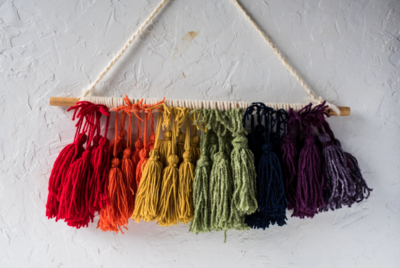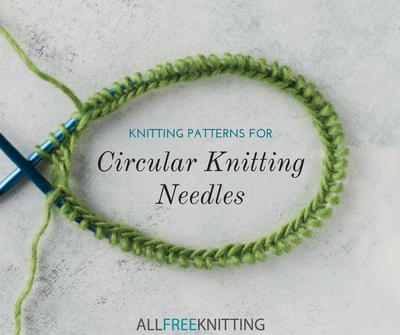Thrum Knitting: The Coziest Way to Knit
Learn the easiest way to add a new layer of "cozy" to your knitting with thrumming... literally!

Most of knitting involves working with fiber that has already been spun into luscious, soft yarn, and you never really deal with the roving fiber before it's fed into a spindle or a wheel. Some people choose to knit with roving wool for a fluffy, cloud-like appearance, but there's so much more you can use it for to up your winter knitting game.
Enter thrum knitting: the easiest way to add a cozy second layer to your knitting that's soft, warm, and absolutely addictive. When you thrum knit, what you're doing is adding an inner layer of fluffy roving wool to your work for some extra insulation. The most popular way you'll see thrumming done is in mittens, where the roving fiber "fills" the mittens where your hands go, but you can use this technique in just about any wearable knit: slippers, cowls, and, yes, even sweaters! Thrum knitting is easier than it sounds, so read on to learn how to do it.
How to Make Thrums
There are two different ways to add thrums to your work: you can knit them in as you go, or you can go back to a finished piece and do some afterthought thrumming.
Thrum Knitting As You Go:
Adding thrums to your work as you knit is the most common way you'll see this technique. You'll see small, colorwork-like stitches spread throughout the work in the color of the roving wool, and that is because the wool is added to the project intermittently on evenly-spaced stitches. The colorworked appearance is hard to avoid with this method, unless you have roving yarn in the exact same color as the yarn with which you're knitting.
Most patterns will explain how to do this, but if you're designing a pattern yourself with thrumming, here's the rundown:
- Separate a bit of the roving yarn. It only needs to be the length of a finger or so.
- Twist the piece of wool a few times to make it easier to work with, and then fold it in half to create a loop.
- Insert your needle into the stitch where the thrum will go.
- Place the roving fiber as a loop over your right needle and pull it through the stitch along with your working yarn.
- With both your thrum and your new stitch on your right needle, you will have made an extra stitch. When you come around to these two stitches in the next round, knit them together.
Check out this example of a pattern for mittens that utilizes thrumming. This pattern for Cotton Candy Mittens is an excellent way to get yourself acquainted with thrumming if you're an absolute beginner. Learn as you go and knit up a pair!
Afterthought Thrumming:
You may wonder why you would use afterthought thrumming when you can just create thrums when you knit. After all, with weaving in ends and sewing pieces together, isn't there enough to do?! There may be a few reasons: perhaps you accidentally knit your mittens too large and you need some thrumming to help them fit better, maybe you missed a spot where you were supposed to add a thrum, or maybe you just want to add thrumming to a well-loved knit to cozy it up a little.
Afterthought thrumming essentially uses duplicate stitch to add thrums to your knitting after the fact. The Fiber Mouse has an excellent tutorial for exactly how to complete this. Check out some of the patterns below that would be perfect candidates for afterthought thrumming, due to their simple stockinette stitch designs and close-to-skin wear:
To what would you add thrumming?
Your Recently Viewed Projects
RachelAnne
Aug 06, 2018
I had no idea what this technique was called but it makes SUCH cozy mittens. I'll definitely be adding this technique to my list of things to try.
Report Inappropriate Comment
Are you sure you would like to report this comment? It will be flagged for our moderators to take action.
Thank you for taking the time to improve the content on our site.






















